
5 October 2015. We drive south from Amman, a whole day on the road with several stops, passing through the countryside, and in and out of towns.
From the bus window: we drive through a parched desert land dotted with olive groves
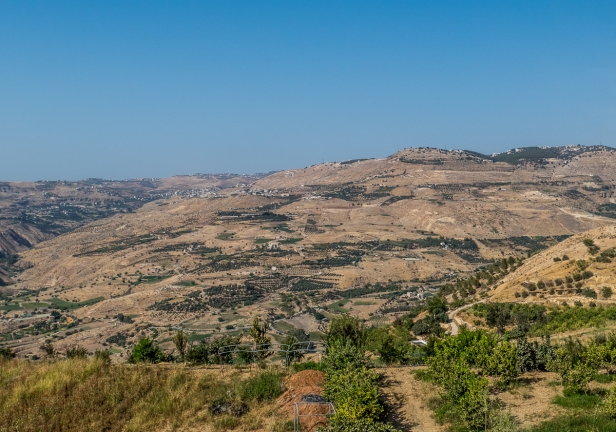
until we come to the town of Madaba: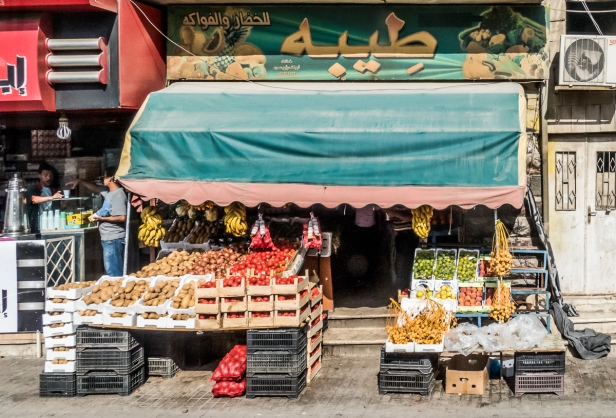
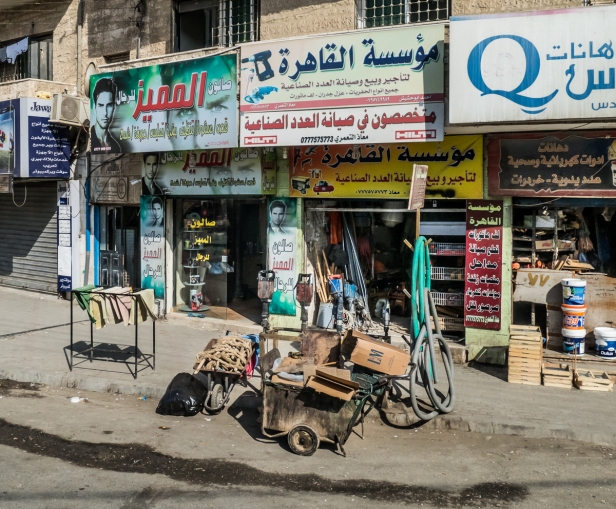


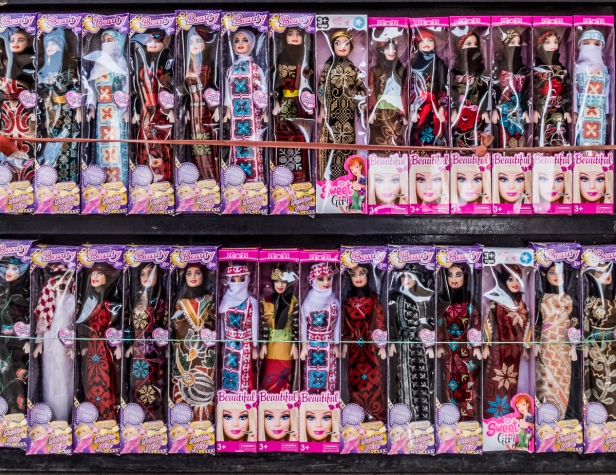

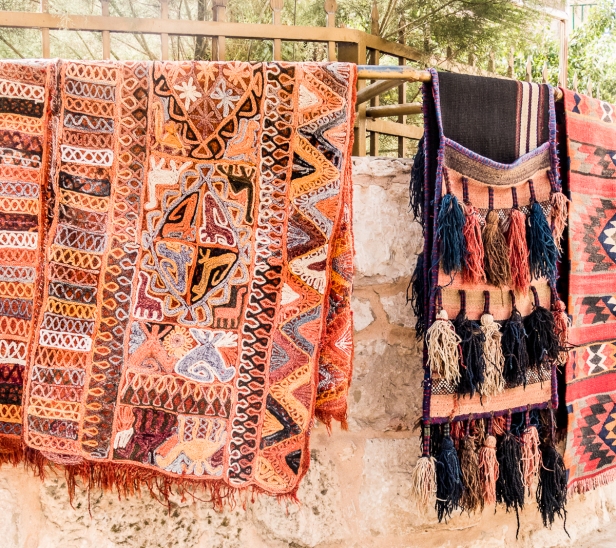

where we stop to see the ancient mosaic map of the Holy Land.
A little further on we stop at Mount Nebo, the place where Moses was granted a view of the Holy Land. To quote LovelyLittleTravel, a Tripadvisor reviewer: [There’s] “not much to see. You basically just stand there and look towards Israel and then you can be on your way”.
I am far more interested in what I can see from the bus window heading towards Kerak: more vignettes of the landscape and glimpses of Jordanian life.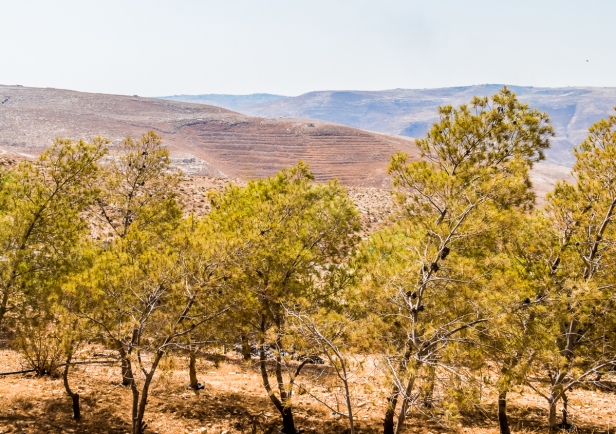
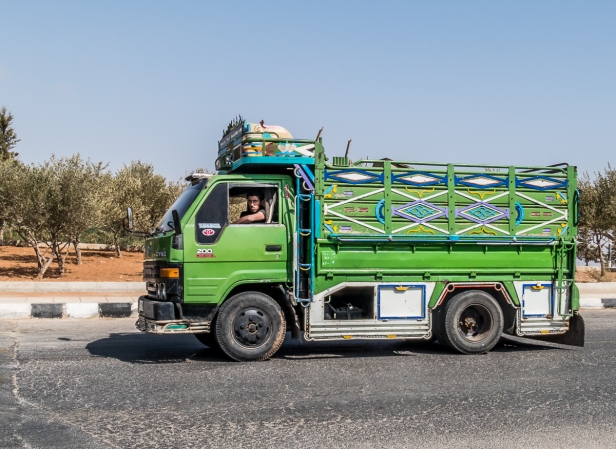
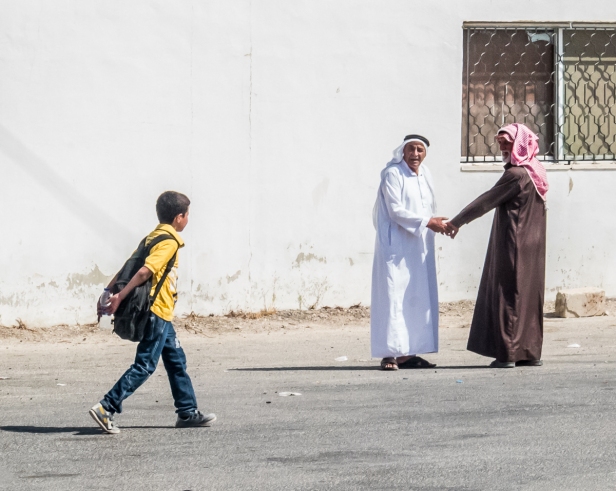
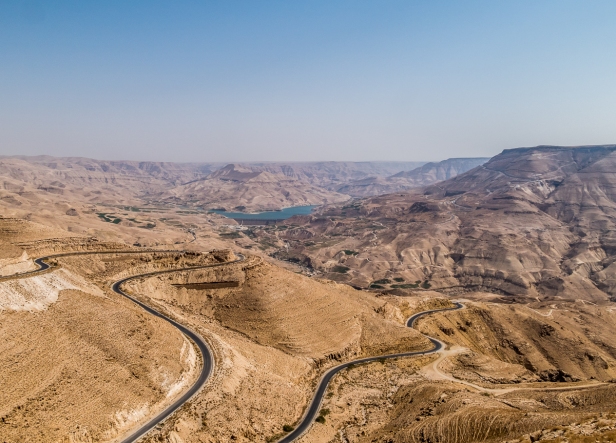
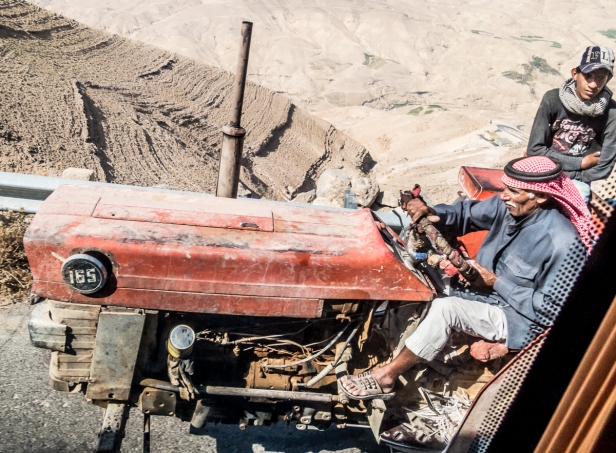

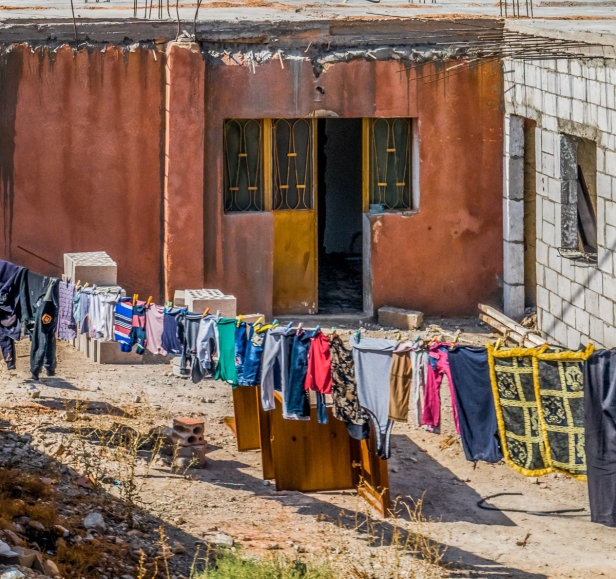
From time to time along the way, I see several ragged camps. I wonder about them. Where did they come from? Who are they? How do they live? How do they get food? And where does their water come from?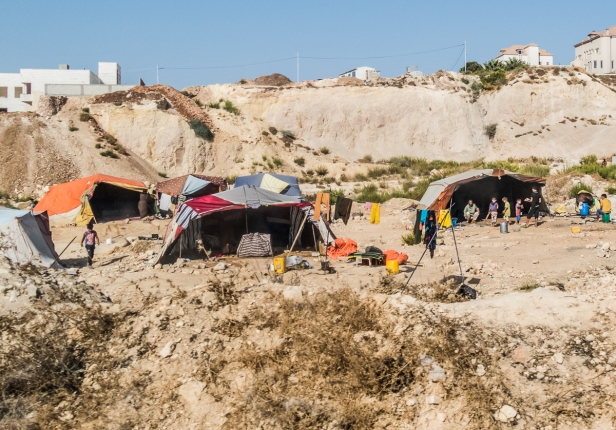
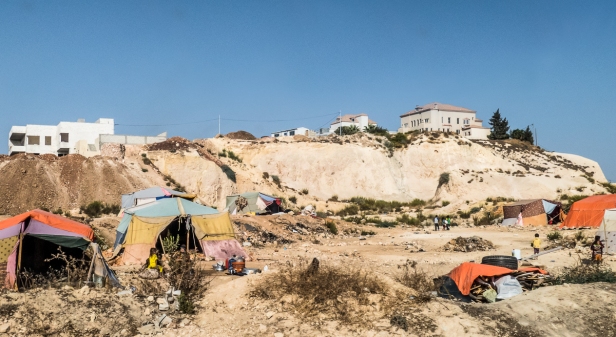

I ask our guide about them and he says they’re Syrian refugees. He says that if they were to go to a town the government of Jordan would provide them with everything they need. It’s true to a point. The reality is a little harsher. Jordan is overwhelmed with Syrian refugees. Because Greece and Turkey have had to take the greatest burden of this tragedy Jordan has been forgotten in the world’s media.
This from an interview with Jordan’s Queen Rania: “Every seventh person in my country is a Syrian refugee. They all need shelter, food, drinking water, education, and healthcare. Even with the work of UN agencies, we are barely coping.”
Since 2011 Jordan has taken in an estimated 1.3 million Syrian refugees. This is alongside severe economic constraints and growing security concerns. Jordan is stretched to the limit.
From Queen Rania: “Unfortunately, today, perceptions of Muslims and knowledge of Islam amongst many are almost exclusively based on the actions of extremist groups who operate on the farthest fringes of our religion. They have nothing to do with faith and everything to do with fanaticism. His Majesty has called these terrorists “khawarej”, meaning outlaws. In fact, many of their fighters were radicals before they were religious and their histories can be traced back to prison cells and criminal networks.”
I think that over the centuries, sadly, little has changed.
Back in the late 10th century Pope Urban II issued a call to arms to support the Byzantine Empire against the migrating Turks in Anatolia, and ostensibly to ensure safe access to the sacred sites in the Holy Land, which by now was under Muslim control. Thus began the Crusades that saw hundreds of thousands of people of all classes from Western Europe take up arms to fight for their church. The Pope’s call to arms engendered years of warring, pillaging, thievery, and cruelty on both sides, all in the name of religion, but it was really always all about control.
Roman of Le Puy was a French nobleman who became Lord of Transjordan in 1118. All the lords in the area didn’t play nicely. Roman rebelled during a revolt in 1134, so King Fulk of Jerusalem, also a French nobleman, confiscated his fiefdom. The fiefdom was then given to King Fulk’s butler, Paganus.
During the 1140’s Paganus ordered construction of the crusader castle at Kerak at the site of an old citadel. It is one of the largest crusader castles in the area, and it became the centre of his power. The location allowed Paganus to control the Bedouin herders and the trade routes from Damascus to Egypt and Mecca, and to get rich by charging a toll on the road. In 1176 Raynald of Châtillon gained possession of the castle, harassed the trade caravans, and attempted an attack on Mecca. Well what did he expect? Saladin besieged the castle and finally captured it in 1189. He wasn’t nice to Raynald. Legend has it Saladin cut off Raynald’s head and dragged his body by the feet to the king. Throughout the Crusades immense cruelties were perpetrated by both Crusaders and Muslims, and through the centuries the castle changed hands many times. It was always all about control.
We see the castle long before we reach it, a huge impregnable ship atop the hill.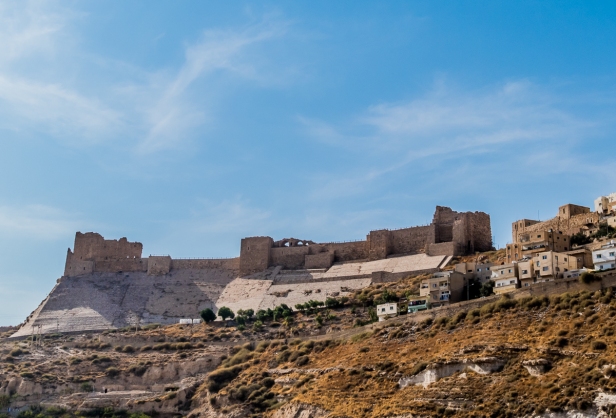
Kerak castle is vast. We are oblivious to its bloody past as we spend an hour or more climbing and crawling and scrambling all over it. Some places are dark, and some passageways are so low that bending is needed. There are wide open spaces, and underground places, vaulted rooms, and long corridors with oppressive arches.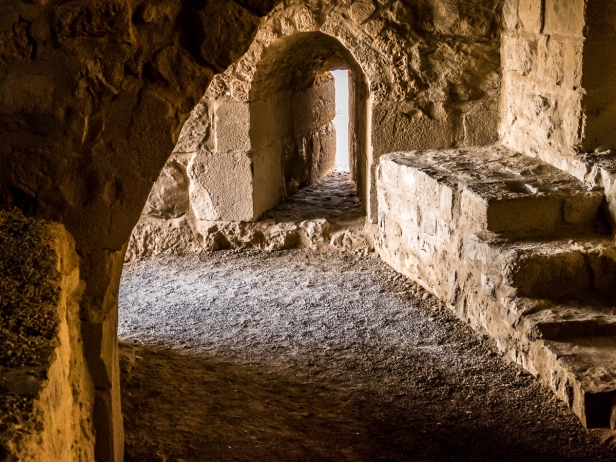
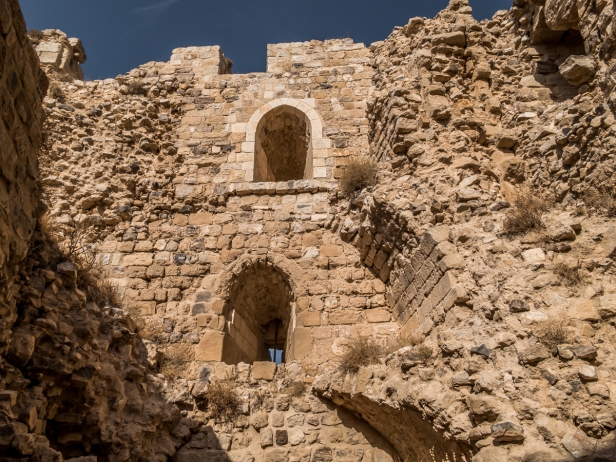
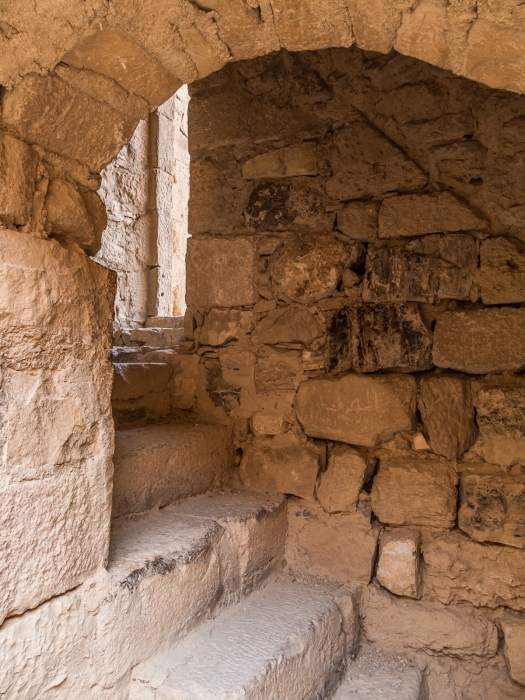


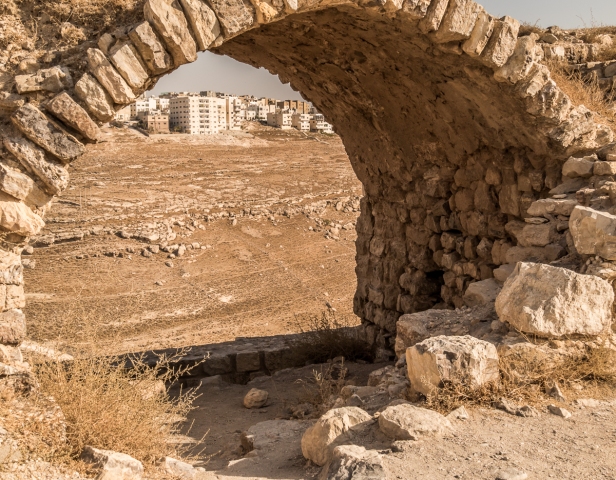
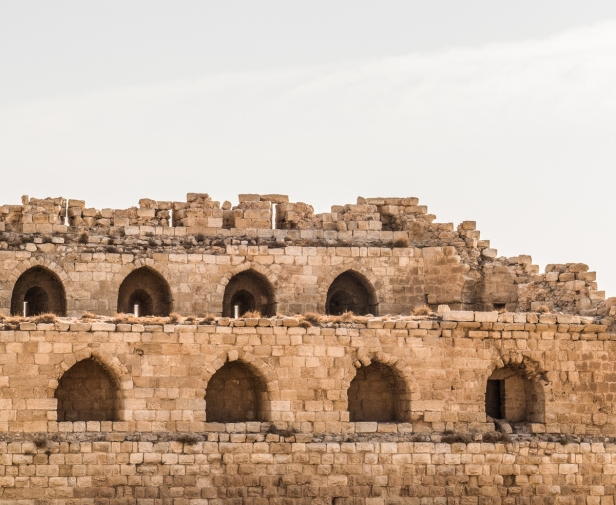
And from the top a clear view of the surrounding countryside.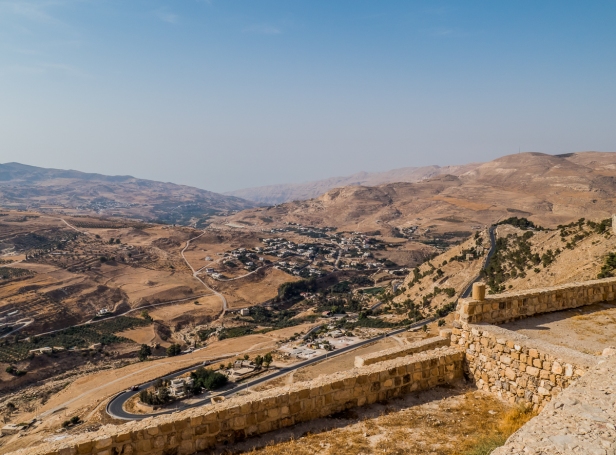
Leaving Kerak we continue our journey south. Passing through another town

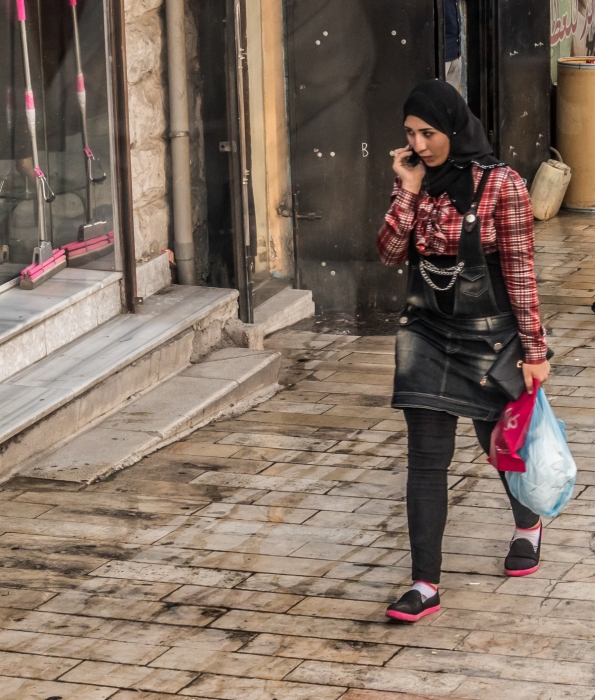
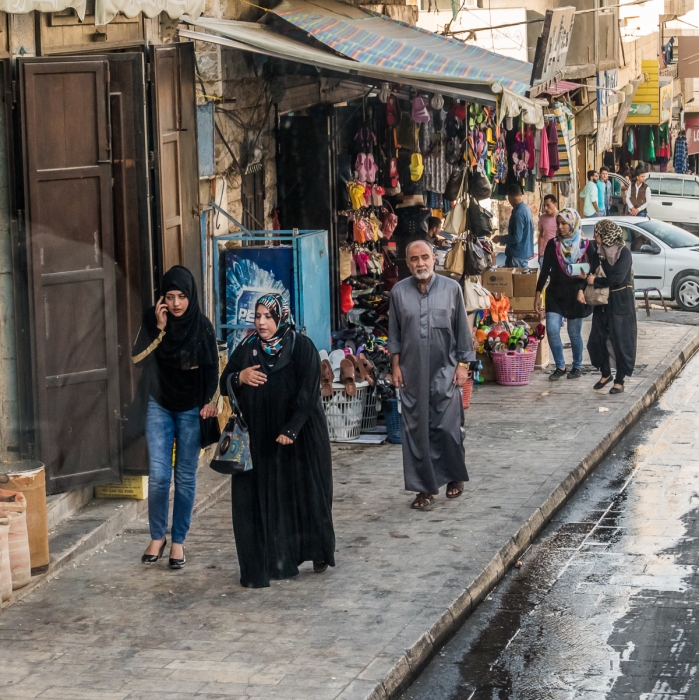
we drive on to the place we’ve all been most anticipating: the remarkable Nabatean city of Petra, one of the great wonders of the ancient world, and unsurprisingly Jordan’s most visited tourist attraction.
Next post: “a rose-red city half as old as time” – Petra!
All words and images by Alison Louise Armstrong unless otherwise noted
© Alison Louise Armstrong and Adventures in Wonderland – a pilgrimage of the heart, 2010-2016.

Fascinating photos of another world. That must be some experience you’re having. ❤
LikeLiked by 2 people
Thanks so much Paulette. Jordan was another amazing experience, followed by Egypt. On Tuesday we’re back to Vancouver for a few months – see our friends and do a little housekeeping.
Alison
LikeLike
Alison, your comment about how centuries have passed but little has changed, really resonates. Life and technology move at light speed but so many cultures are entrenched in these fundamental battles about control, access, power, man vs man, me vs you. We need more compassion in the world and that takes generations of effort, not advances in technology. Great, thought provoking post. And congrats to you and Don on being “Discovered”!!
LikeLiked by 2 people
Thanks Kelly. Yes the ‘Discovery’ was a delightful surprise! Oh the whole control/power/desperate bloody fighting thing leaves me slack-jawed. No better than squabbling two year olds but with bigger weapons and more cruelty. And nothing ever changes. Sigh. I mostly make it a very strong point to focus on the positive, all that is good in the world, and leave the children to their myopic fearful lives.
Alison
LikeLike
What an amazing castle! And I love the little glimpses of life that you capture along the way. Fascinating stuff. Be safe, Alison and Don.
LikeLiked by 2 people
It was really fascinating. The castle was fabulous. For me it was the highlight of the day – being able to explore all over it, and the next most interesting was everything that I could see from the bus as we drove along – little glimpses of everyday life. It was great.
Alison
LikeLiked by 1 person
How very interesting. Your words are impacting and photography is stunning.
LikeLiked by 2 people
Thank you so much. I’m glad you enjoyed it.
Alison
LikeLike
Wow what amazing photos. It’s very interesting to see photos of everyday life in Jordan x
LikeLiked by 2 people
Thanks so much Daniijane. Jordan is a fascinating country. I wish I could have seen more of it.
Alison
LikeLiked by 1 person
You’ve got an amazing blog!!! Keep it up!!!
LikeLiked by 2 people
Thank you! What a lovely compliment. Yeah! Don’t worry – I’ll be keeping at it.
Alison
LikeLike
Alison, first of all I really love the tone of your photos — It suits Jordan’s arid landscape so well. As for the conflict between religions, I agree that it was (and will always be) about control. Sadly, religion is often what those in power use to gather support. They dream of heaven but they create hell on earth, which is very ironic. Compassion, love, and caring about others are the things we need the most now, more than ever.
LikeLiked by 3 people
Thank Bama. It’s always a fun challenge shooting from a moving vehicle. Fortunately there were times we were going slowly enough to be able to get something.
And, yes, religion has always been used for control. The irony I agree is the powers that be create hell in the name of heaven. The really sad thing is that all religions at their core teach the same things – love, peace, kindness and compassion, which are, as you say, what we most need most now.
Alison
LikeLike
My Sunday treat is the arrival of your blog. What a fabulous history lesson and stunning photos. My goodness you do spoil your friends and readers. As always, thank you so much for bringing such enjoyment to my life.
LikeLiked by 2 people
Awww, thanks Ros, I’m so glad you’re enjoying the blog.
Alison
LikeLike
Those Barbie dolls! Wow. Neat photos!
LikeLiked by 2 people
Thanks Casey. Aren’t those dolls great? I couldn’t resist taking a photo of them.
Alison
LikeLike
So much of slow travel is looking out a window and I love your photos that showcase glimpses of daily life in this region: the shops, the landscape between the villages, the houses and refugee tents and the varieties of clothing styles. And through every photo I can imagine both your excitement at seeing this ancient land as well as the relentless heat! Anita
LikeLiked by 2 people
Thanks Anita. Most of that day was looking out the window, and it was fascinating to get all these glimpses of the landscape, and of ordinary life.
Oh yes, it was hot, but Don and I like hot so we were fine. Relentless is a good word for it.
Alison
LikeLike
You did a great job of capturing the feelings through the bus window. It is a difficult period for the Jordanians today, and it must impact you as you travel through their country. There is such history of struggle in the region it can be overwhelming. Well done as always. Tim & Anne
LikeLiked by 2 people
Thanks so much you two. Jordan is luckily fairly neutral in the midst of a firestorm. I just hope the country continues to be safe. Two of the Jordan’s biggest problems arise from the location: the influx of refugees, and diminishing tourist dollars. People are afraid to travel there when they shouldn’t be. An up turn in tourism would definitely help the economy, but most people are not willing to go there.
Alison
LikeLiked by 1 person
The politics and religion and other intractable problems depress me, so I’ll just comment on the scenery! You so perfectly captured the arid brown-ness of the landscape and, even to some extent, the towns there. What a bright spot those dolls are – a colorful line-up that almost looks like a piece of fabric at first glance! As always, the people are a highlight, going about their business in these out-of-time places.
LikeLiked by 2 people
Thanks Lex. I really enjoyed myself capturing what I could of the countryside and towns as we drove along – vignettes of ordinary life. The politics and religion issues depress me too, so I try not to think about them, and focus on the positive, but I had to find out about those people camping in hand-made tents in the middle of nowhere.
I loved the dolls! They were such a surprise. So different from Asia where not a single shop dummy looks remotely like the people who live there.
Alison
LikeLiked by 1 person
Another interesting and thought provoking post. I too enjoy scrambling around medieval castles and just wrote about a visit to one in Germany. (with a creepy dungeon) They all seem to have a nasty history. It amazes me that the world has never learned. Say Hi to Vancouver from me!! Loving my life in Spain but miss Canada from time to time. Guess that is to be expected. XO
LikeLiked by 2 people
Thanks Darlene. Oh the castle was fun! We were there for about an hour and needed all that time – it’s huge! I can imagine thousands of people living there in its heyday.
I’m looking forward to being in Vancouver again. I’ll give it a hug for you 🙂
Planning on being in Spain next summer! Where abouts are you?
Alison
LikeLike
We are about one hour south of Alicante. The town is called Orihuela Costa. Would be great to meet up!!
LikeLiked by 1 person
I’ve added you to the Spain list 🙂
A.
LikeLike
I love how these guys just order construction of castles. Little finger snap,and voila! Makes me wonder about the whole economy of castle-building, how quickly they designed them, identified sources of material, got laborers and masons organized. Part of me thinks it wasn’t always pretty, but they must have had royal architects or engineers who understood how to build castles and directed all of this. It seems like they came together pretty quick, all things considered… I love all the nooks and passageways, and thinking of each one of them being laid out just so upon the land…
As always love the tales from the road and the many pictures. And I like hearing about Islam in the terms described above and in the faces of the people you found. It seems more gentler, more peaceful, than what we are so often shown in the media.
Peace
Michael
LikeLiked by 2 people
I know right? I want a castle here, go build me one. I bet they had architects, designers, master builders and a whole huge pile of minions at beck and call. I’m always amused when history says this castle, or that palace was built by this king or that emperor, but you can be sure whoever it was didn’t do the actual building.
I’m sure Islam, like Christianity, and just about all religions anywhere, has a great gentleness at its core. Somehow the interpretation of the teachings always seems to get lost in power struggles, fear, greed, and myopia.
Alison
LikeLiked by 1 person
Great glimpse into the everyday life. Travel by bus through the countryside and towns is the best way to experience the real people.
LikeLiked by 2 people
Thanks Angeline. I was quite enraptured with what I could see as we drove by. And then there were a few brief times we got to meet some people and interact with them, and see ordinary life at the beach, and at the market. So much fun!
Alison
LikeLiked by 1 person
I keep thinking I am reading National Geographic when I pick up your blog posts! What a classic adventure – and your brilliant photography just makes the journey so real. Wonderful.
LikeLiked by 2 people
Wow Susan, thank you so much. I feel most honoured. It was an amazing journey and I’m glad to be able to share it.
Alison
LikeLike
well-deserved!
LikeLiked by 1 person
Very nice!
LikeLiked by 2 people
Thanks Suzanne, glad you enjoyed it.
Alison
LikeLike
Well, I am again in awe of your photos, but so much more so this time, because…JEEESH…you took them from the window of a moving bus! You’re like the photograph whisperer. And here’s a spooky thought: I woke up this morning and for some reason thought about the terrorist nonsense going down today, and then thought that nothing much has changed…since the Crusades! Apparently, humans don’t learn lessons as well as Great Danes or poodles. Is Kerak the castle where the tossed victims over the wall to hear them scream on their way down? We haven’t learned much about playing nice either, eh?
LikeLiked by 2 people
Thanks BF. Photograph whisperer! I’ll take it. But I so often look at the photos of real photographers and think I wish I could do that, or I wish I’d thought of that angle, or that light. Always learning. I’ve taken loads of photos from buses and trains. Cars tend to be a bit fast. Low Fstop, very fast shutter speed, hold lens as close as possible to window (without actually touching it) to cut reflection. Jeff Bell takes these amazing photos with streaked blurred background and zooming motorbike in focus. I wanna learn how to do that!
That is a spooky thought. I don’t know about tossing bodies at Kerak, but it certainly sounds like a Crusader-type activity. Yeah, haven’t learn’t much at all about playing nicely. For intelligent creatures we cure can be amazingly insane.
Alison
LikeLike
Allison I felt as though I was sitting beside you on the bus. The photos, as Badifish points out, so astounding taken from a moving vehicle through a window! So much the same over the centuries one wonders if it can ever change.
I must make special comment about the Barbie dolls which I found fascinating.
LikeLiked by 2 people
Thanks Sue. I’m so glad you felt like you were there – that’s the best compliment.
What’s that expression – the more things change the more they remain the same. I like to think that basic goodness remains the same too. And I’m sure you’ve had the same kind of experiences travelling – people are overwhelmingly kind and helpful. It’s the insane minority that seems to get all the attention. May kindness win! 🙂
Oh I was immediately fascinated by the Muslim Barbies. Such a surprise, but so right. I noticed travelling in Asia all the shop dummies are western, and here in Mexico kids playing with blond Barbies.
Alison
LikeLike
Wonderful post Alison! I would love to go to Jordan. It is one of those places that I really want to go to badly. How long where you there for in total?
LikeLiked by 2 people
Thanks Nicole, I’m glad you enjoyed it. Jordan is fascinating. I hope you get there one day. We were there for 2 weeks.
Alison
LikeLike
Did you feel like 2 weeks was a good amount of time?
LikeLiked by 1 person
I just double checked on the calendar. We were only there 10 1/2 days, and yes it was a good amount of time though I do wish we’d had time to go hiking in Wadi Ibn Hamad. If you don’t do a tour I’d recommend that even though we didn’t go there, and it may be hard to get to. We had 3 days in Amman, and then did the Exodus “A week in Jordan” tour.
A.
LikeLiked by 1 person
Oh that sounds fantastic Alison. I’ve seen a lot of Wadi pics on Instagram lately. It looks amazing. Not sure when I will make it to Jordan but it is on the list (well the growing list!).
LikeLiked by 1 person
Inspiring!!
LikeLiked by 2 people
Thank you! Glad you enjoyed it.
Alison
LikeLike
Hey, great pictures! Jordan is on my bucket list since a while now, this post is pushing the wish even more!
Greta
LikeLiked by 2 people
Thank you so much Greta. I hope you get to Jordan!
Alison
LikeLiked by 1 person
Envious of all these places… awesome scenery
LikeLiked by 2 people
Thanks Jeff. Jordan is worth visiting – lots of amazing places to see.
Alison
LikeLike
thank you for sharing these wonderful photos with us! what an interesting insight into everyday life in Jordan
LikeLiked by 2 people
Thank you sacraltravel, my pleasure. It was a wonderful journey.
Alison
LikeLiked by 1 person
Pretty interesting post
LikeLiked by 2 people
Thank you, I’m glad you like it.
Alison
LikeLiked by 1 person
visually captivating
ancient arid civilization
still thriving with fresh hopes!
somehow reminds me of desert landscapes
of the Indian Reservations I lived on for many years 🙂
LikeLiked by 2 people
Yes, still thriving.
I love desert landscapes, having seen many throughout the world.
Something special about the harsh arid beauty.
Alison
LikeLike
The snippets of life ‘on the streets’ is engrossing, Alison. The ‘Barbies’ made me smile but some things made me sad too.
LikeLiked by 2 people
Thanks Jo. I was fascinated by all I could see from the bus as we travelled along. The barbies made me smile too – so unexpected, though I don’t know why they should be. And yes, much that made me sad also.
Alison
LikeLiked by 1 person
and another place I would love to visit….that also has the honey light…educative and so beautiful Alison
LikeLiked by 1 person
Thanks Hedy. I hope you get there one day. It’s very beautiful, and yes, definitely has the honey light.
Alison
LikeLike